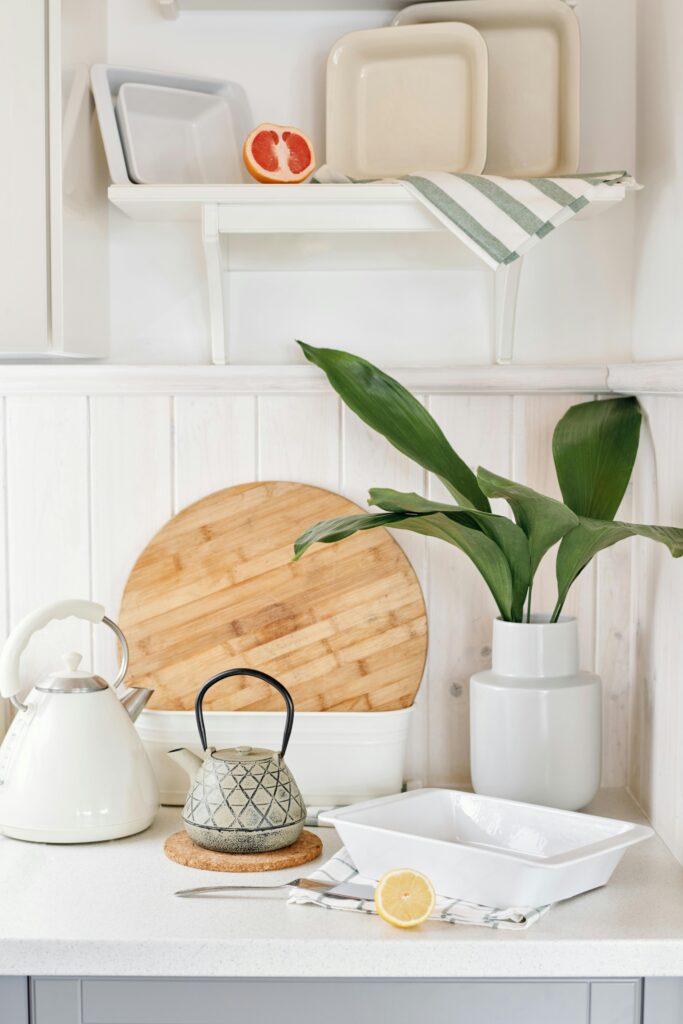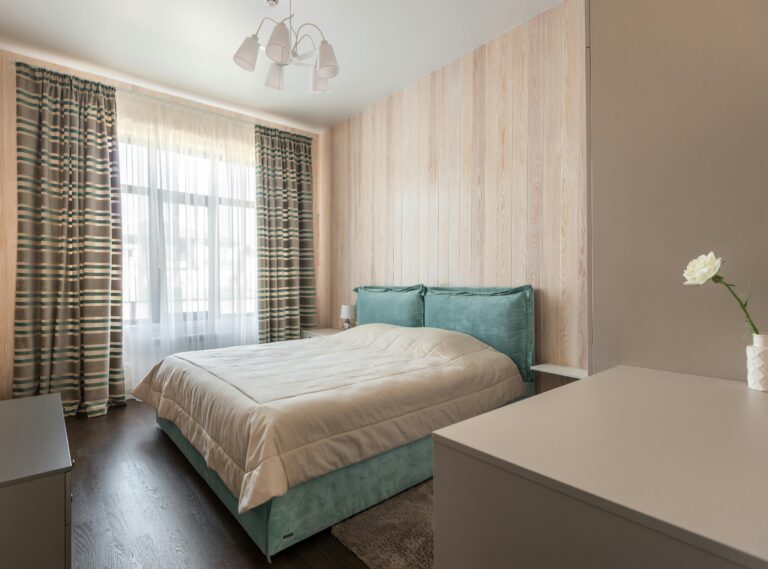Small kitchens create storage challenges that standard organizing advice doesn’t always solve. When counter space is limited, the usual tips about decluttering and cute containers only go so far. Here’s what actually works when you’re dealing with minimal square footage.
Why Counter Space Feels Even Tighter Than It Is

Limited counter space becomes a bigger problem when items pile up without a clear system. Appliances, mail, cooking tools, and everyday essentials compete for the same few inches. The result is a workspace that feels cramped even after cleaning. A targeted approach to what stays out and what gets stored can open up more room than expected.
1. Vertical Zones Beat Horizontal Spreading
Stacking upward instead of outward keeps counters clearer while maintaining easy access. Wall-mounted magnetic strips hold knives and metal utensils. Floating shelves above the counter create extra levels for spices or small containers. Hooks under cabinets can hold mugs or measuring cups.
Think about using the space between your counter and upper cabinets. That zone often goes unused but can handle lightweight items perfectly.
2. Multi-Purpose Tools Replace Single-Use Gadgets
Every item that stays on the counter should earn its spot. A food processor that also chops, grates, and mixes takes up less room than three separate tools. An electric kettle that heats water for tea, oatmeal, and pour-over coffee replaces multiple appliances. Keeping only versatile tools means fewer things fighting for space.
Look at what you use daily versus weekly. Daily items stay out. Weekly items get stored.
3. Corner Areas Hold More Than They Seem
Corners are often dead zones that collect random objects. A two-tier lazy Susan in a corner maximizes that awkward space for oils, spices, or small containers. Corner shelves with angled access make reaching items easier. Treating corners as functional storage instead of catch-all spots adds usable space.
Even a small corner shelf mounted at eye level can hold frequently used items without crowding the main counter.
Also Read: 7 Wall-Mounted Storage Solutions For Cramped Kitchens
4. Rolling Carts Add Flexible Counter Space
A slim rolling cart tucks beside the fridge or stove when not in use. When cooking, it rolls out to hold prep ingredients or tools. Mobile storage adapts to your workflow instead of locking you into one layout. Choose a cart with wheels that lock so it stays stable during use.
Keep the top tier for active tasks and lower tiers for backup supplies. This way, the cart works as both prep space and storage.
5. Drawer Dividers Stop the Junk Pile
When counter space is tight, drawers become critical. But messy drawers lead to items migrating back onto the counter. Dividers separate utensils, gadgets, and small tools into clear zones. Organized drawers mean you’ll actually use them instead of leaving everything out because it’s easier to see.
A tray works for utensils. Small bins or boxes handle larger tools. The goal is opening a drawer and finding what you need in two seconds.
Read More: 10 Vertical Storage Ideas For Tiny Apartment Kitchens
6. Under-Sink Space Works Harder With Structure
The cabinet under the sink usually wastes half its potential. Stackable bins, sliding drawers, or over-the-pipe shelves create layers instead of one jumbled heap. Cleaning supplies, dish soap backups, and trash bags fit in organized sections. Better under-sink storage means fewer bottles crowding the counter edges.
Tension rods installed vertically can hold spray bottles. This keeps them upright and accessible without taking up floor space in the cabinet.
7. Appliance Garages Hide Daily-Use Items
An appliance garage is a cabinet section with a door that lifts or slides. It keeps toasters, coffee makers, or blenders accessible but out of sight. Concealed but reachable storage means you don’t sacrifice convenience for a clear counter. Some kitchens have these built in, but adding a small cabinet with a roll-up door works too.
If built-in options aren’t possible, a decorative box or bin on the counter can hide smaller appliances. It’s not as sleek, but it still reduces visual clutter.
Also Read: How to Keep a Small Pantry Organized and Easy to Use
8. One-In-One-Out Keeps Space From Shrinking Again
The best organizing system can fall apart if new items keep arriving. When something new comes into the kitchen, something similar leaves. A new spatula means an old one gets donated. Maintaining a cap on quantities prevents the slow creep of clutter that eats up counter space over time.
Set a number for categories that tend to multiply. Four wooden spoons instead of eight. Two cutting boards instead of five. Limits make decisions easier.
What Doesn’t Work in Tight Spaces
Open shelving sounds appealing but requires constant upkeep in small kitchens. Dust and grease settle quickly on exposed items. Over-the-sink cutting boards seem clever but often wobble or feel unstable during actual use. Hanging fruit baskets can swing into your workspace and become more annoying than helpful.
Cabinet door organizers sometimes interfere with closing the door fully. Test clearance before committing to adhesive racks or hooks inside cabinet doors.
Wrapping It Up
Limited counter space doesn’t mean settling for chaos or giving up on kitchen functionality. Small adjustments to how vertical areas, corners, and hidden zones get used can create surprising breathing room. The key is giving every item a specific spot and sticking with tools that handle multiple jobs. Once the system is in place, maintaining it takes minimal effort. Your kitchen might be small, but it can still work exactly the way you need it to.



